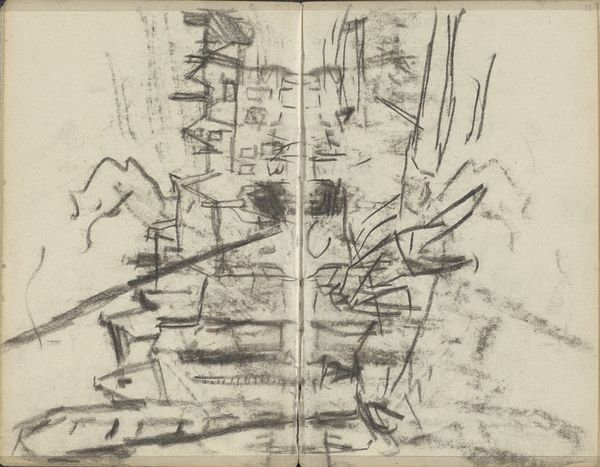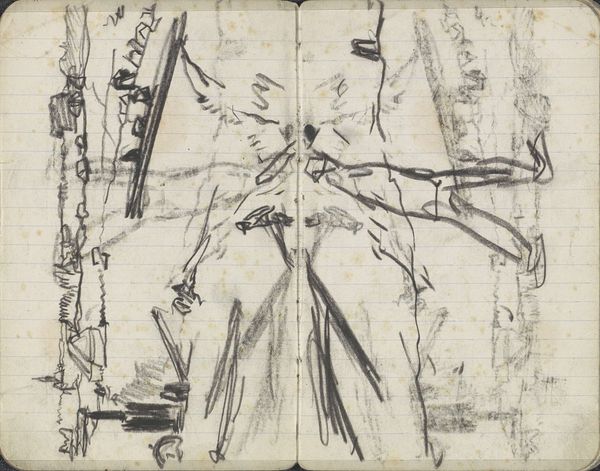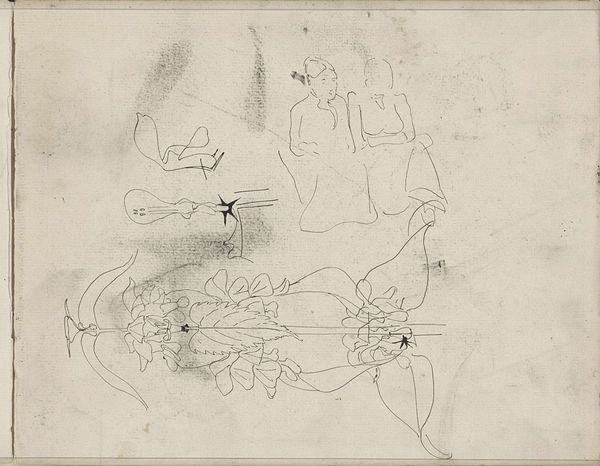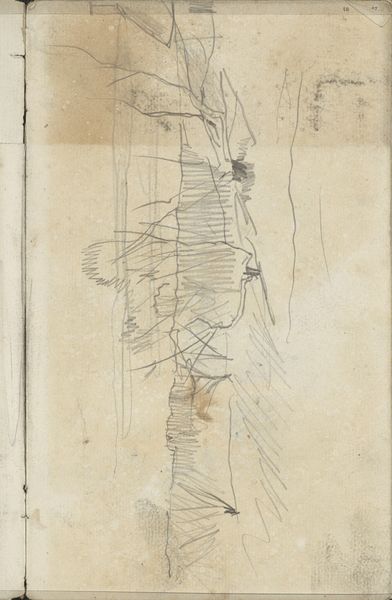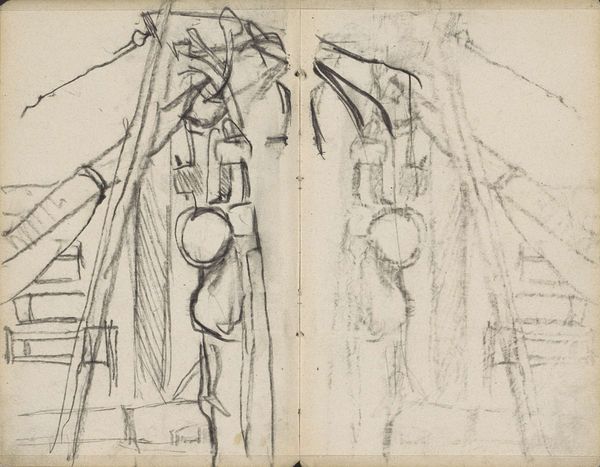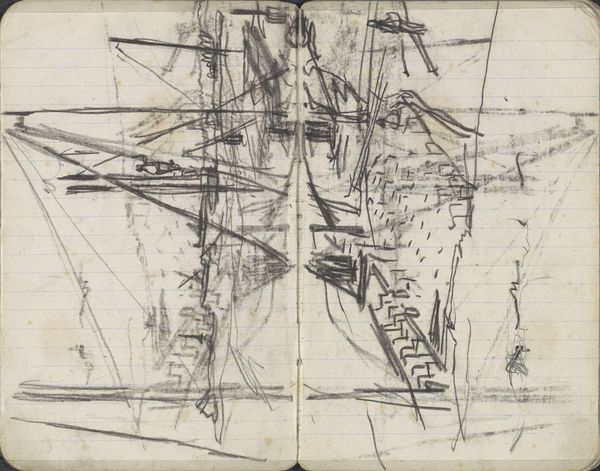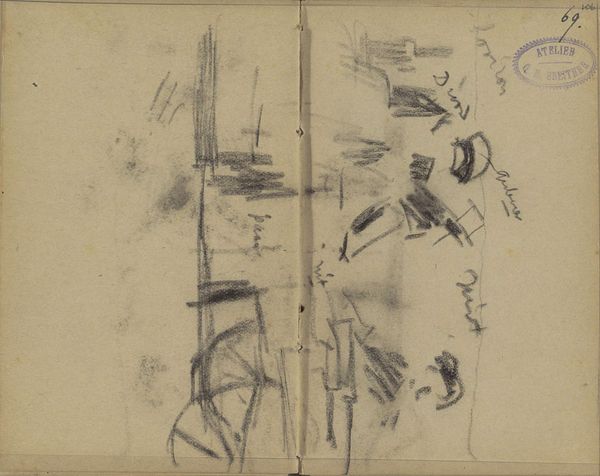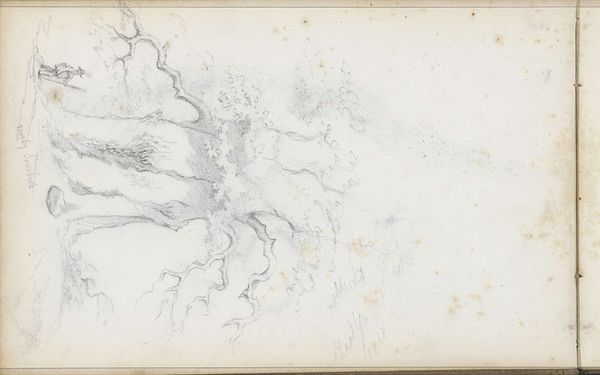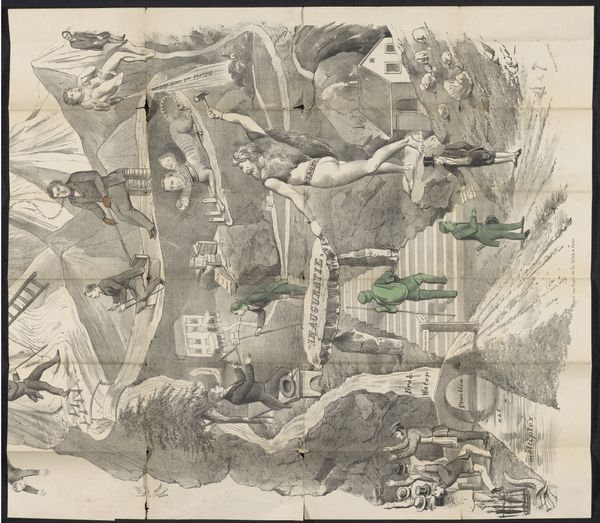
Copyright: Rijks Museum: Open Domain
Editor: We’re looking at “Gezicht op een druk Rokin te Amsterdam,” which roughly translates to “View of a Busy Rokin Street in Amsterdam.” It’s a graphite drawing, dating probably from the early 1900s, by George Hendrik Breitner and currently residing in the Rijksmuseum. It feels so fleeting and full of restless movement...almost as if you just caught a glimpse of the street through a rainy window. What's your impression? Curator: Oh, absolutely! It feels like Breitner's capturing the very *essence* of urban hustle – the blur of a city in motion. It's all suggestion, isn't it? We see what looks like figures and carriages, but rendered in this rapid, almost chaotic, scrawl. It’s less about specific detail, and more about conveying the energy. Does it make you think of anything else, the way it sort of smudges and suggests forms instead of defining them? Editor: I think of photography a little bit? Like, a photo with a slow shutter speed where everything moving becomes a blur. Curator: Precisely! Breitner was really fascinated with photography; you can see it reflected here, like trying to freeze a moment in time while acknowledging its inherent movement. It’s interesting to consider the limitations, but maybe also the freedom he found in drawing compared to the camera. It invites a kind of imaginative leap, wouldn't you say? You have to *participate* in seeing the scene. Editor: It’s definitely more evocative than documentary. So much is implied! What does that freedom in suggestion mean to you? Curator: For me, it's a reminder that art doesn't need to replicate reality to be truthful. Sometimes, the truest reflection lies in capturing a feeling, an impression. Think about it—isn’t it more resonant this way? You almost hear the clip-clop of the hooves and the rumble of carriage wheels. What will you take away from it, having considered it a bit more closely? Editor: I guess, how sketches like this show that a sense of immediacy can sometimes speak louder than a perfectly rendered image. I feel more like I was *there.* Curator: Yes, exactly! The emotional impact is heightened through that impressionistic lens, don't you think? It allows a personal connection in ways that more polished pieces sometimes don't. A really nice way to end the discussion.
Comments
No comments
Be the first to comment and join the conversation on the ultimate creative platform.
